The chain is one of the core components of your bike. It’s the connecting link between your legs and the rear wheel, allowing you to transfer your power to the ground! This hard-working and critical component is constantly exposed to the elements and abused with poor shifting and sometimes just needs some TLC. That’s why it’s vital that you take good care of it.
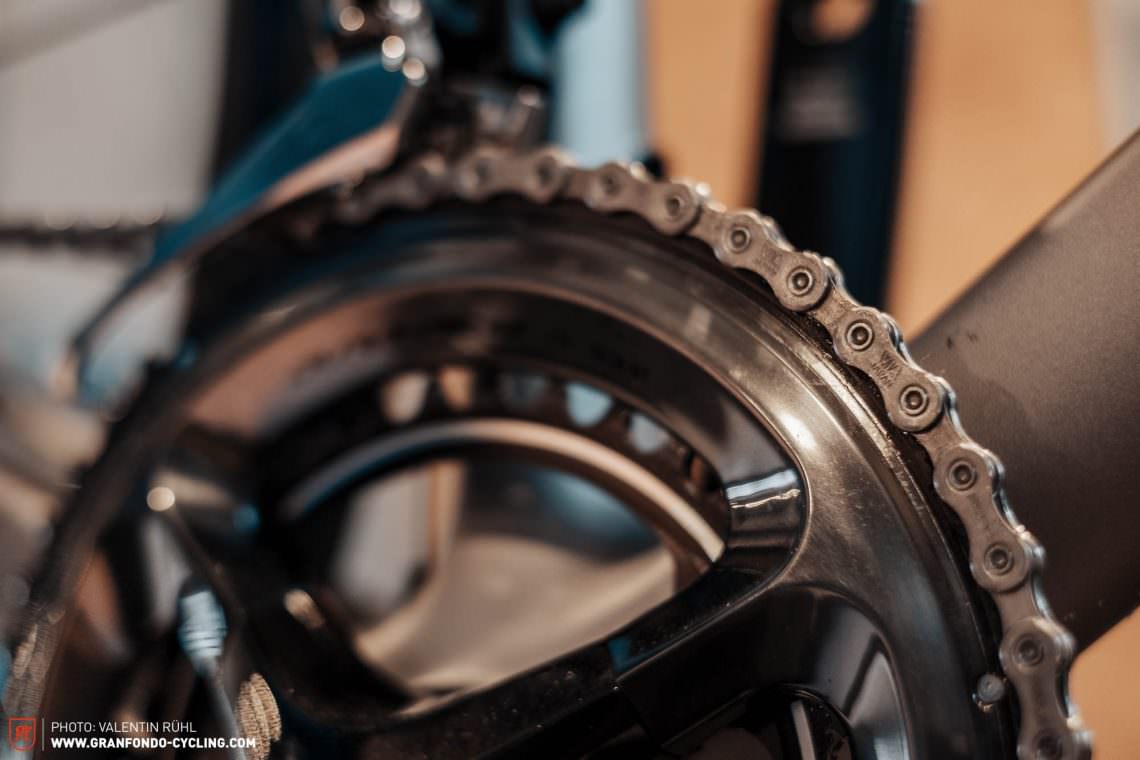
When should I lube my chain?
The optimal interval between chain services strongly depends on the conditions you ride in. Unfortunately we can’t say whether it’s in dry or wet conditions that your chain gets the most abuse – sand and dust will cause just as much wear as mud and water. That’s why we recommend cleaning and re-lubing your chain regularly – ideally after every ride.
Which lubricant is the best for my chain?
To some extent the right choice of lubricant is subjective. But one thing’s for sure: we wouldn’t recommend thin lubricants such as WD 40 or Brunox Turbo Spray because they are a lot harder to apply to the specific area. Much easier to use drip bottles.
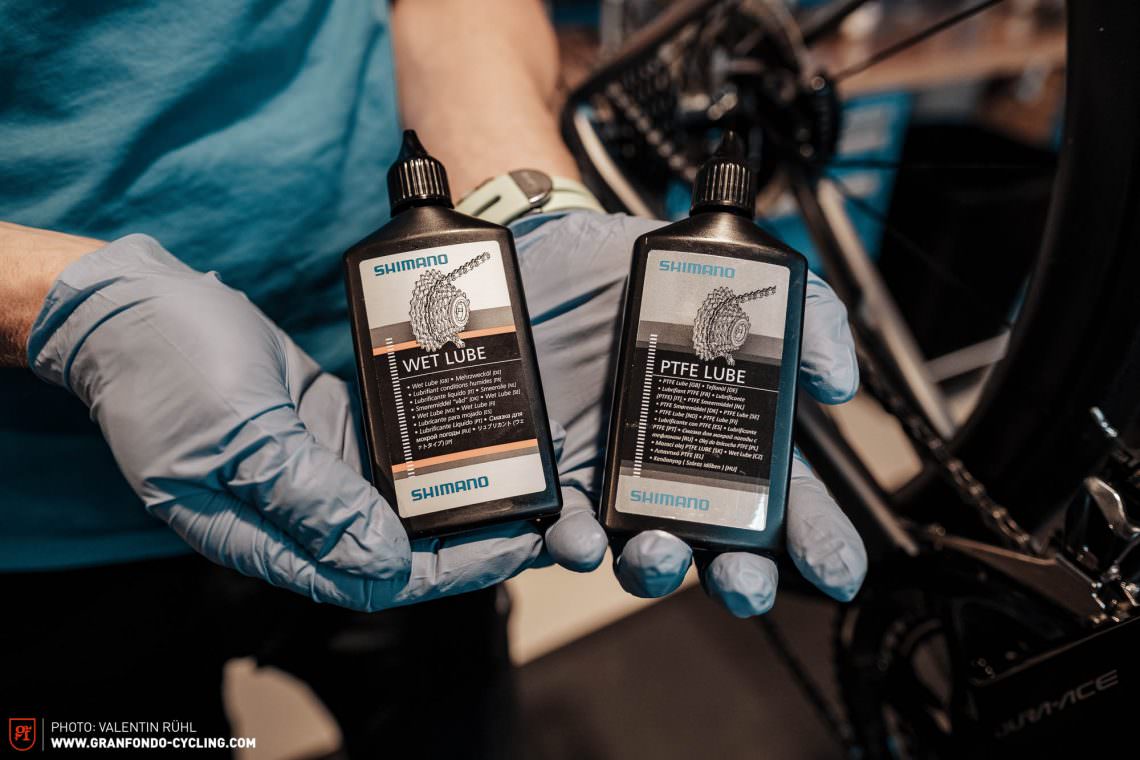
The right choice of lube and ideal application interval depend on the conditions you mostly ride in. As a rule of thumb: damp conditions and moist environments require high-viscosity lubricants which stick to the chain for longer and displace water and moisture. On the other hand, in dry and dusty conditions we recommend using low-viscosity lubricants which attract less dust and dirt.
If you service your chain with regular intervals a standard lubricant should do the job.
Difficulty
- easy
Required tools
- chain lube
- cloth
- perhaps gloves
- perhaps decreaser
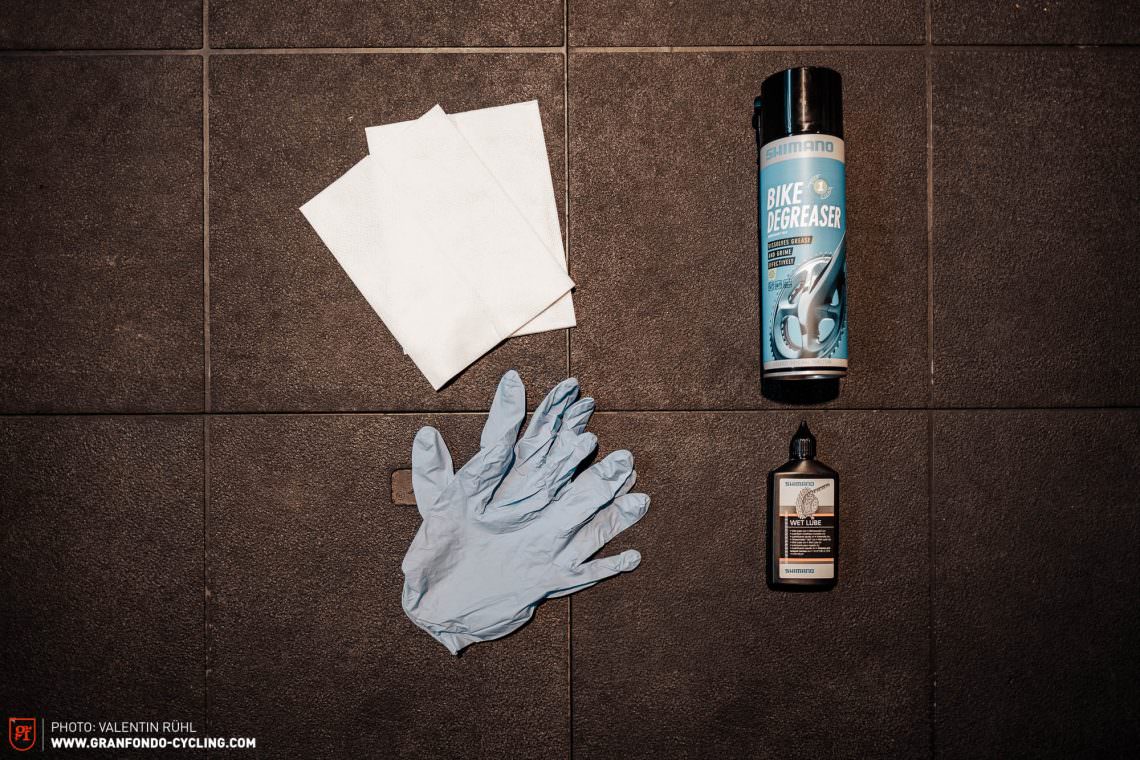
How do I lube my chain?
Step 1 – Clean it
Before applying fresh lubricant you have to remove the dirt from your chain. Use an old rag to clean the chain, cassette, chainrings and jockey wheels thoroughly.
Attention: never use a degreaser or disc brake cleaner! These will remove the grease from in-between the chain links – and unfortunately this can’t be re-applied afterwards. We’re also sceptical about soaking your chain in cleaning solutions or using a special chain-cleaning device – we think they’re pointless. If you want to get rid of stubborn dirt and think you need to use a degreaser, make sure you rinse it off thoroughly afterwards. Leftover traces of degreaser will interact with the fresh layer of lubricant and prevent it from sticking to the chain properly. We strongly advise against soaking your chain in a degreasing solution and would instead recommend you apply this indirectly with a cloth.
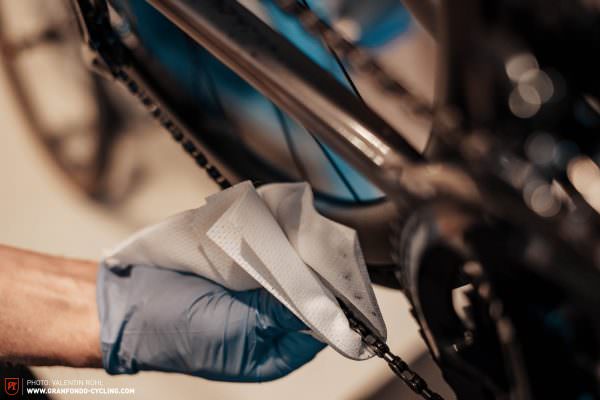
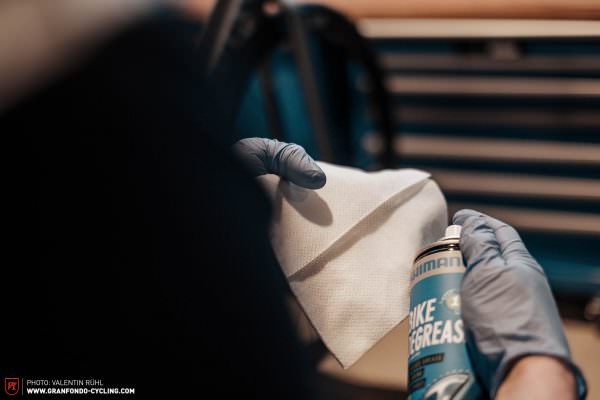
Step II – Lubricating the chain
Now that your chain is clean it’s time to apply a fresh layer of lubricant. Important note: make sure to apply the lube to the inside links of the chain i.e. the side that is in contact with the cassette and chainrings.
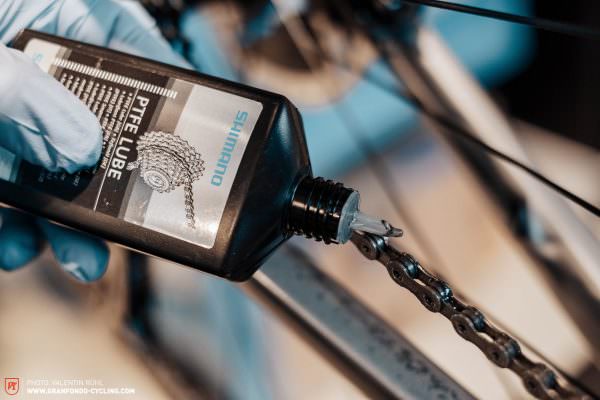

Step III – Remove excess grease
“Less is more” even when it comes to chain-lubricants. Too much lubricant can cause unwanted dirt to stick to the chain and increases wear. You should remove any excess after lubricating your chain! For better results, give the lube at least 5 Minutes to penetrate into the links, spin the cranks, change gears to spread a little lubricant evenly over the sprockets and wipe off the excess with a dry rag.
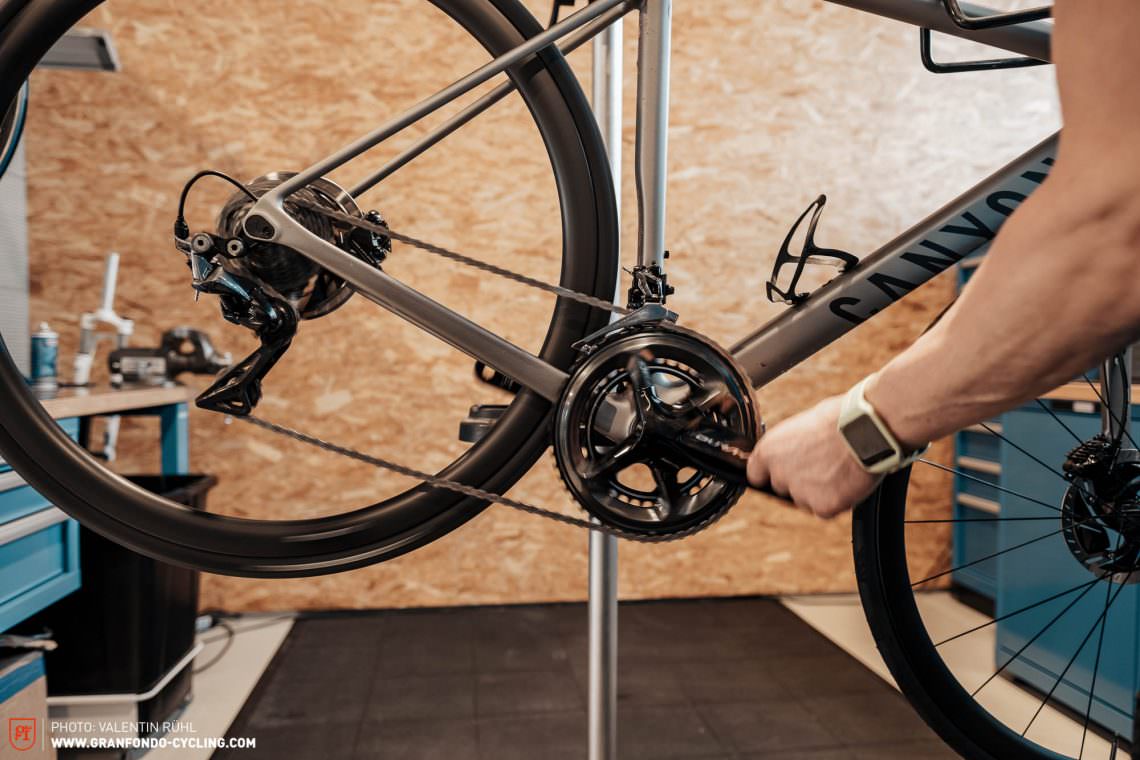
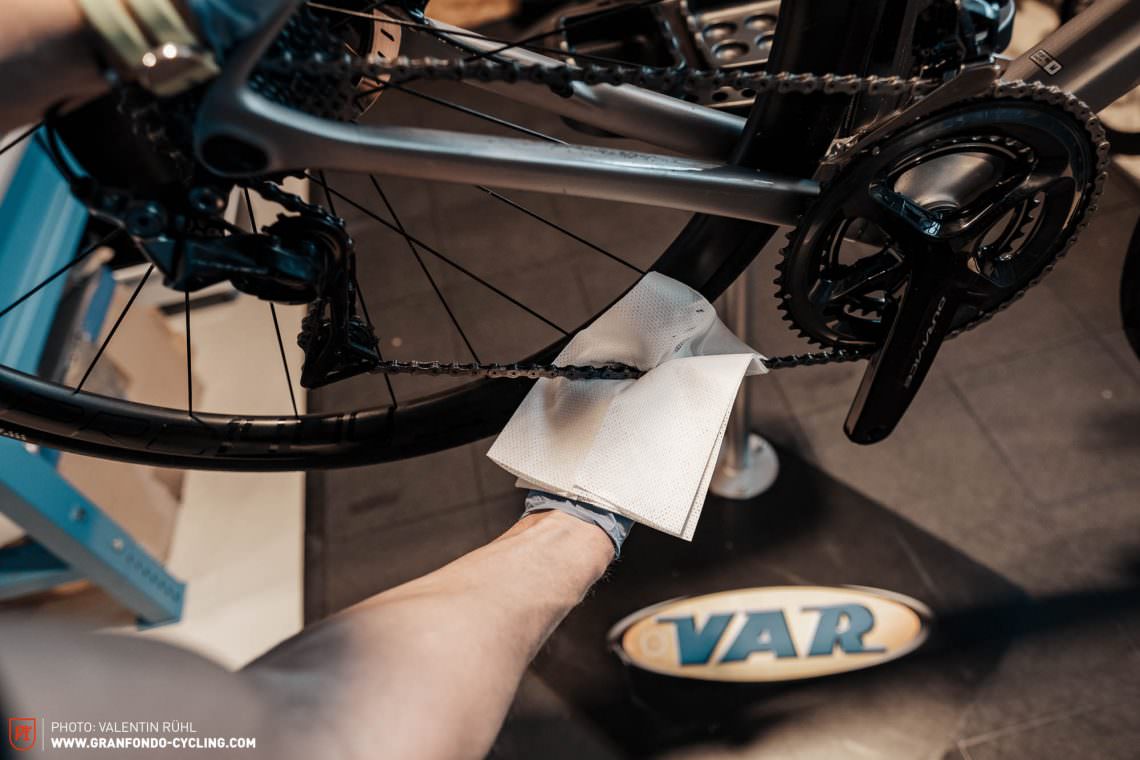
Did you enjoy this article? If so, we would be stoked if you decide to support us with a monthly contribution. By becoming a supporter of GRAN FONDO, you will help secure a sustainable future for high-quality cycling journalism. Click here to learn more.
Words: Christoph Bayer, Manuel Buck Photos: Valentin Rühl







